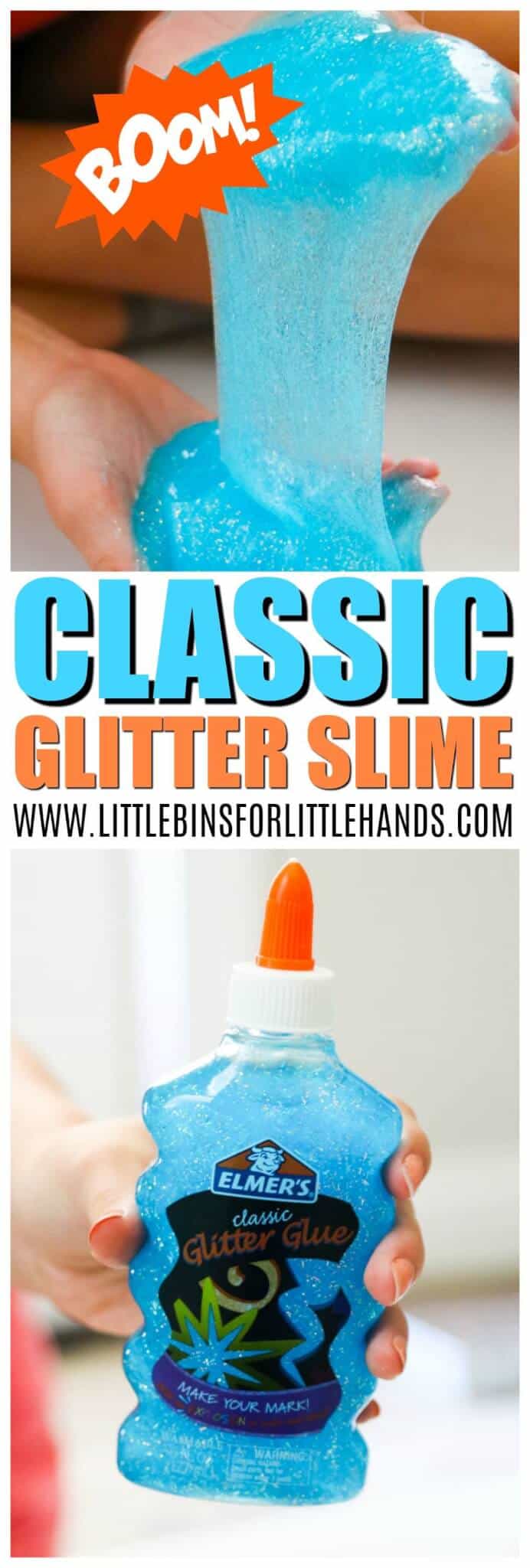Ultimate Guide to Homemade Glue Slime Recipe for Fun-Filled Parenting
Hey there, creative parents and guardians! Are you looking for a super fun activity that will not only bring joy to your kiddos’ faces but also spark their curiosity and scientific wonder? Look no further because we’re diving into the wonderfully gooey world of homemade glue slime!
Slime-making is a fantastic way to blend playtime with learning, and the best part is that it’s incredibly easy to do right at home. Plus, you can customize it with colors, glitter, and even scents! In this guide, you’ll discover a basic glue slime recipe, some awesome variations, and a smattering of fun facts to impress your little ones.
The Simplest Glue Slime Recipe
First things first, let’s get the essentials down with a basic glue slime recipe that you can whip up in no time. Ready for some hands-on fun? Let’s slime!
Ingredients:
- 1/2 cup of white PVA glue (school glue works great!)
- 1/2 teaspoon of baking soda
- 1 1/2 tablespoons of contact lens solution (make sure it contains boric acid and sodium borate)
- Food coloring (optional)
- Glitter, beads, or other fun mix-ins (optional)
Instructions:
- Grab a bowl and pour in the 1/2 cup of white PVA glue.
- If you’re opting for color, now’s the time to add a few drops of food coloring. Mix it in well to ensure a beautiful, even hue.
- Sprinkle the 1/2 teaspoon of baking soda into the glue and stir until it’s fully integrated.
- Time for the magical moment! Add the contact lens solution into the mix. Start with 1 tablespoon, mixing quickly. The slime will begin to form and pull away from the sides of the bowl.
- If your concoction is still a bit sticky, add another 1/2 tablespoon of contact lens solution and mix until you reach the perfect slime consistency.
- Now, if you’re all about that sparkle and fun textures, toss in your glitter, beads, or whatever creative mix-ins you’ve chosen.
- Once the slime has come together, take it out of the bowl and knead it with your hands for a minute or two, to ensure it’s thoroughly mixed and stretchy.
Voilà! You’ve created your very own batch of homemade glue slime! Wasn’t that a piece of cake?
Slime Safety Tips for Parents
Before we delve deeper into the slime-pit, let’s chat safety. Making slime is loads of fun, but we want to make sure we’re doing it right to keep our little ones out of harm’s way.
- Always supervise your children during slime play, especially the little ones who may be tempted to taste their creations.
- Use child-safe, non-toxic glue to ensure a safe slime-making experience.
- Ensure that your contact lens solution lists boric acid and sodium borate in its contents, as these are key activators for the slime.
- Do a patch test with the slime on your child’s skin if they have sensitive skin or allergies.
- Keep your slime-making area well-ventilated, especially if you’re using scented options or any additive that could produce fumes.
- Always wash your hands thoroughly before and after playing with slime to prevent the spread of germs.
With these precautions in mind, you’re set for a safe and exhilarating slime adventure!
Engaging in slime-making with your children isn’t just about crafting the squishiest, most dazzling slime ever (although, that’s definitely a goal!). It’s about spending quality time together, fostering creativity, and inspiring a love for experimentation and learning. And as you’ve seen with our basic glue slime recipe, it’s incredibly simple to get started!
Stick around, because up next, we’re going to explore some cool scientific facts about slime, additional slime recipes for those adventurous types, and how to troubleshoot common slime fails. But that’s not all; we’ll also dip into some creative ways to turn slime-making into an educational experience for all ages. Your family’s slime odyssey is just beginning, and it’s sure to be a blast!

5 Things Parents Should Know in Preparing for Glue Slime Recipe
Before you dive into the sticky and exciting world of slime-making, let’s arm you with some essential nuggets of wisdom! Here are five important things to keep in mind:
1. Select the Right Type of Glue
Not all glues are created equal when it comes to slime. You’re looking for PVA glue (polyvinyl acetate) – often simply called white school glue. It’s usually labeled non-toxic and is the perfect base for your slime. Remember: clear glue can also be used for a more translucent look.
2. Measure for Success
Slime recipes aren’t just random; they are chemistry in action! Being accurate with your measurements is crucial. Too much of any one ingredient can tip the balance from perfect slime to a sticky mess or rubbery glob. Use proper measuring spoons and cups to ensure success.
3. Customizing is Key
The beauty of homemade slime is making it your own. Whether it’s vivid neon colors, a sprinkle of glitter, or a dash of beads for texture, customizations turn slime time into a personalized experience. But remember, sometimes less is more – so add slowly, and mix thoroughly!
4. Slime is a Science Experiment
Beyond being super fun, slime making is science in action. It’s a fantastic opportunity to explain the concept of a chemical reaction to your kids. As you add the contact solution, the glue’s polymers connect to form the slime texture. It’s hands-on learning at its finest!
5. Pre-Slime Preparation
Get all your ingredients and tools ready before you start. Lay out some wax paper or a plastic tray for easy clean-up. Have a sealable container ready to store your finished slime, and don’t forget to dress for mess – sometimes, the fun of slime is in its splatter!
Delving into the Science of Slime
Creating the perfect goo isn’t just about following instructions. It’s understanding the ‘why’ behind the ‘how.’ So let’s get scientific! Slime is a non-Newtonian fluid, which means it doesn’t have a consistent viscosity. Depending on the pressure you apply, it can either flow like a liquid or resist like a solid. Fascinating, right?
The science behind slime involves a chemical reaction where the PVA molecules in the glue crosslink with the borate ions present in the contact lens solution. This forms a stretchy, 3-dimensional network that holds the ingredients together – and presto, you get slime!
More Slime Recipes for Eager Experimenters
Eager to put a twist on the basic slime recipe? Here are a quick variations that will keep the creativity flowing:
- Fluffy Slime: Add in a dollop of shaving cream to your basic recipe for an airier, fluffier texture.
- Butter Slime: Incorporate some soft clay to the mix, and voilà, you’ve got a spreadable, buttery slime.
- Magnetic Slime: Mix in some iron oxide powder and watch your slime come alive with the help of a magnet!
- Glow-in-the-Dark Slime: Use glow-in-the-dark paint for an eerie slime that shines bright in the dark.
Common slime fails, usually stickiness or brittleness, are no cause for alarm. Usually, they can be remedied by adjusting your ratios of ingredients – a little more contact solution for stickiness, or a touch more glue if it’s breaking apart.
Using slime-making as a learning tool can encompass lessons on measurements, chemical reactions, properties of materials, and even color theory if you’re mixing dyes! The possibilities are as boundless as your imagination.
So, dear parents and guardians, are you ready to embark on this gooey journey with your little ones? With this guide, you’re well on your way to becoming the ultimate slime-makers. Get set to mix, stretch, and squish your way to hours of endless family fun – it’s slime time!
See more great Things to Do with Kids in New Zealand here. For more information see here
Disclaimer
The articles available via our website provide general information only and we strongly urge readers to exercise caution and conduct their own thorough research and fact-checking. The information presented should not be taken as absolute truth, and, to the maximum extent permitted by law, we will not be held liable for any inaccuracies or errors in the content. It is essential for individuals to independently verify and validate the information before making any decisions or taking any actions based on the articles.




